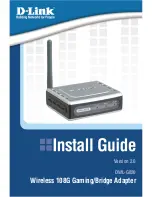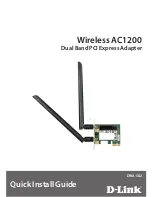
396 Configuring the PID format
4.
If you are not using multipathing software, unmount the volumes from their mount points using umount.
The command usage is
umount <mount_point>
. For example:
umount /mnt/jbod
5.
If you are using multipathing software, use that software to remove one fabric’s devices from its
configuration.
6.
Remove the device entries for the fabric you are migrating. For example, if the HBA for that fabric is
fcs0, execute the command:
rmdev -Rdl fcs0
7.
Connect to each switch in the fabric.
8.
Issue the
switchDisable
command.
9.
Issue the
configure
command and change the Core Switch PID Format to 1.
10.
Issue the
configEnable [effective_zone_configuration]
command. For example:
configenable my_config
11.
Issue the
switchEnable
command. Enable the core switches first, then the edges.
12.
Rebuild the device entries for the affected fabric using the
cfgMgr
command. For example:
cfgmgr –v
This command might take several minutes to complete.
13.
If you are not using multipathing software, vary on the disk volume groups. The proper usage would be
varyonvg <volume_group_name>
. For example:
varyonvg datavg
14.
If you are not using multipathing software, mount all devices again and restart I/O. For example:
mount /mnt/jbod
15.
If you are using multipathing software, re-enable the affected path.
16.
Repeat for all fabrics.
Swapping port area IDs
If a device that uses port binding is connected to a port that fails, you can use port swapping to make
another physical port use the same PID as the failed port. The device can then be plugged into the new
port without the need to reboot the device.
Use the following procedure to swap the port area IDs of two physical switch ports. In order to swap port
area IDs, the port swap feature must be enabled, and both switch ports must be disabled. The swapped
area IDs for the two ports remain persistent across reboots, power cycles, and failovers.
Swap area IDs for a pair of switch ports as follows:
1.
Connect to the switch and log in as admin.
2.
Enable the port swap feature:
portswapenable
3.
For 4/16 SAN Switch and 4/8 SAN Switch, SAN Switch 2/8V, SAN Switch 2/16V,
SAN Switch 2/32, SAN Switch 4/32, 4/64 SAN Switch and 400 MP Router
: Enter the
following commands:
portdisable
port1
portdisable
port2
For SAN Director 2/128, and 4/256 SAN Director
: Enter the following commands:
portdisable slot/
port1
portdisable slot/
port2
4.
For 4/16 SAN Switch and 4/8 SAN Switch, SAN Switch 2/8V, SAN Switch 2/16V,
SAN Switch 2/32, SAN Switch 4/32, 4/64 SAN Switch and 400 MP Router
: Enter the
following command:
portswap
port1
port2
For SAN Director 2/128, and 4/256 SAN Director
: Enter the following command:
portswap slot1/
port1
slot2/
port2
Содержание AE370A - Brocade 4Gb SAN Switch 4/12
Страница 1: ...HP StorageWorks Fabric OS 5 2 x administrator guide Part number 5697 0014 Fifth edition May 2009 ...
Страница 18: ...18 ...
Страница 82: ...82 Managing user accounts ...
Страница 102: ...102 Configuring standard security features ...
Страница 126: ...126 Maintaining configurations ...
Страница 198: ...198 Routing traffic ...
Страница 238: ...238 Using the FC FC routing service ...
Страница 260: ...260 Administering FICON fabrics ...
Страница 280: ...280 Working with diagnostic features ...
Страница 332: ...332 Administering Extended Fabrics ...
Страница 414: ...398 Configuring the PID format ...
Страница 420: ...404 Configuring interoperability mode ...
Страница 426: ...410 Understanding legacy password behaviour ...
Страница 442: ...426 ...
Страница 444: ......
Страница 447: ......
















































